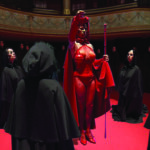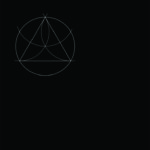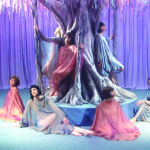Fascination with the occult and unknown territories is nothing new; it comes and goes through the passage of time, always having the capacity to renovate itself as many prominent writers and thinkers have shown us. Leading historical figures such as Goethe, Hoffmann, Edgar Allan Poe, Baudelaire, Balzac, just to name a few, to the more contemporary such as Aldous Huxley, William S. Burroughs, Fernando Pessoa, William B. Yeats, Allen Ginsberg, including pop-cultural icons as The Beatles, The Rolling Stones, Led Zeppelin, David Bowie, have all produced works of brilliance under the influence of occultism. In the visual arts, the term ‘spiritual’ has been used to cover the various practices that had inspired early great modernist artists such as Kasimir Malevich and Wassily Kandinsky. The strong interest the Surrealists had for the occult, the uncanny and the subconscious is well known stemming from Giorgio de Chirico, René Magritte, André Breton, Salvador Dali, Victor Brauner, Yves Tanguy just to name a few.
Why has there been such a renovated interest for the occult in the art field in the last ten to fifteen years? Why is the topic so timely? It is clear that the post-apocalyptic mood associated to the turning of the millennium directly linked to events such as 9/11, the Iraq War and the most recent terrorist attacks, economic and ecological crisis have created the perfect grounds for a renewed interest in the unknown. Artists are ready to embrace the inexplicable, the mysterious, the subconscious and the negative in order to reinvent visual culture. Themes of threat, paranoia, death and violence can be reminders of the state of the world and at the same time also materialise in new forms of nihilism, melancholy and explorations of extremes. The occult remains non, anti and counter by definition and is particularly serviceable in periods of crisis.


A few years ago, I co-curated an exhibition called ‘Secret Societies’ that first took place at the Schirn Kunsthalle in Frankfurt and then travelled to the CAPC in Bordeaux (2011-2012). During its preparation, we were inspired by the main question of how to present or represent the invisible? How to deal with it? Why and how, in this case, make public what is secretive by nature? After doing a certain level of research, we noticed how difficult it was to determine the origins of secret societies: Egypt, Neolithic times… Secret societies seem to have always been present in humankind, yet what is really known? But then again, it is not so surprising finally not to obtain very clear information as this is precisely linked to their hidden dimensions. To consider this contradiction and to work around it became one of our project’s main challenges.
According to Wikipedia a secret society is a club or organization whose activities and inner functioning are concealed from non-members. The term “secret society” is usually applied to organisations ranging from the common and harmless (collegiate fraternities) to mythical organisations described in conspiracy theories as immensely powerful, with self-serving financial or political agendas, global reach, and often satanic beliefs. “Secret society” is a term used to describe a variety of organisations. Although the exact meaning of the term is disputed, several of the proposed definitions indicate that a degree of secrecy and secret knowledge should be present. This may include for members a strict obligation of denying that they know about the group’s own existence and possibly negative consequences for acknowledging their membership. It also includes strong ties between the organisation’s members, and frequently rites which outsiders are generally not allowed to observe. A secret society can be basically defined by three characteristics: it is exclusive, it claims to possess special secrets, and it shows a strong inclination in favour of its own members. Because some secret societies have political aims, subverting social rules and sometimes ignoring the law, they are illegal in several countries. The most prominent ones, just to cite a few, range from the Freemason organisations, the Rose Cross, the Kabbalah, the Mafia, to the Ku Klux Klan, Al Qaeda and now Isis.
I would like to quote one of the contributors of our exhibition catalogue, Jan Verwoert, who has shed great light on the topic: “There is nothing to unveil about the secret. The secret is the veil. Its only truth is the function it fulfils within a certain social logic by operating as a visibly invisible barrier between the inside and outside of an exclusive community”. This analysis was particularly interesting for us as the exhibition tried to address and work around “the paradox of the secret”: the fact that a secret only exists when it is communicated. Secret societies play with/interact with society at large and its media culture. Actually, communication technologies today, through social media, create the best, most adequate conditions for new secret societies to emerge. Secret societies escape but at the same time depend on existing power structures – they are underground and cannot exist out in the open.
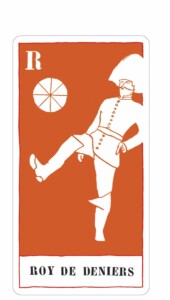
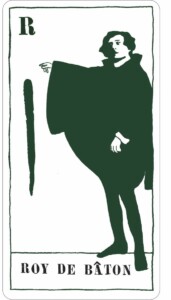
It is important to state that it has never been our intention as curators to make a project ‘about’ secret societies. A scientific-ethnographic or sociological survey that would cover the topic extensively, nor an art exhibition that would ‘illustrate’ the theme. Instead of ‘commenting’, our wish was to try to create such an atmosphere that would plunge the spectator into the mental world of secret societies. An exhibition that could function somehow like an initiation ritual inducing the visitor to live certain experiences. That is precisely why we commissioned an artist Fabian Marti, to design a special display that could almost ‘guide the viewer to choose certain paths’, an architecture that could at the same time conceal and reveal, but always keep the secret! Just like secret societies invent their own identifiable trademark, we thought we had to invent our own aesthetic codes.
Right from the start we thought of dividing the exhibition space into different zones, loose zones that would cover secret societies topics, which were anyway interconnected. The same thing went with the audio-guide that we commissioned Gary Lachman to write (who is also contributing to this issue), which had a very particular form and role as it did not function in the classical way commenting the exhibition and works on display but was rather independent and worked more as an open-guide to the topic of secret societies. It was conceived as a free-floating, drifting sort of thing that could evoke some kind of personal experience in the audience, not just inform them. Although the exhibition space and audio-guide had been conceived and divided into zones or chapters (Initiation, Hidden Masters, Secret Knowledge, Symbols, Altered States, Conspiracy Consciousness) all of these things interblended.
For some, the art world could be perceived as some sort of secret society, apparently open but in reality very closed with its special codes of recognition. Nevertheless, one has to be a bit careful when jumping to such conclusions as this can easily reproduce an over-romanticised idea of art as a form of resistance or cult.
A certain number of artists and writers have either created their own “secret societies”, invented a fictitious secret society as an artwork or have simply operated in a similar manner with exclusivity of membership and strict rules of behaviour. Most of their ideas are still very interesting and challenging today. Poets like Yeats or, even more, Fernando Pessoa were strongly influenced by their contacts or membership in secret societies. Although the Lettrist International never described itself as a secret society, they constituted themselves as a provisional micro-society, which worked in a similar manner, with its very radical way of life, isolation and strict rules of inclusion and exclusion. The LI (Lettrist International) lived “on the margins of the economy” and leisure was seen as the apex of civilization. The revolution they promised was the supersession of art and the end of work. The LI was founded by Debord and Wolman and was constituted of four women and seven men. For years, Wolman and Debord outlasted all the other members who were gradually excluded until even Wolman too was finally expelled in 1957.
Georges Bataille founded a secret society and a public review called “Acéphale”, the symbol of which was a decapitated man drawn by artist André Masson. His secret society organised several nocturnal meetings in the woods, near an oak, which had been struck by lightning. “Acéphale” society members were required to adopt and participate in numerous rituals and also invited to meditate on texts of Nietzsche, Freud, Sade and Mauss, read during the meetings. Some samples of the magazine were presented in the show as well as two contemporary pieces that refer to the theme. One is a neon piece by Cerith Wyn Evans, where he takes this logo and enlarges it as a neon and the other work is a process-based project by the artist duo, Goldin & Senneby, which is a long research they have been doing on a mysterious off-shore company called “Headless”.
Jim Shaw invented a fictional cult called “Oism” grounded on his interest in religious movements influence on American society. Supposedly founded by Annie O Wooten in upstate New York in the mid-19th century, “Oism” is based on a belief in reincarnation, the reverse passage of time, and a female divinity symbolized by the letter “O”. The installations dealing with “Oism” function like theatrical backdrops that combine real and fictional characters related to the invented cult. In the exhibition, a video that is part of this body of work, which is basically an initiation ritual into this cult was shown.
For some years now, Joachim Koerster has been researching and making works on an early twentieth century esoteric society from London, “The Hermetic Order of the Golden Dawn” and its renegate member Aleister Crowley. Crowley’s portrait was included on the cover of the Beatles’ Sergent Pepper album, and its imagery finds its ways into the songs of John Lennon and David Bowie among others, revealing Crowley’s position as a progenitor and avatar of the occult’s thriving within counter-culture. Crowley’s presence was felt with a series of photos Koerster took of the location where Aleister Crowley had founded his commune “The Abbey of Thelema” close to Palermo in Sicily, through a diagram on the occult by Suzanne Treister and through a film by one of his most notorious disciples Kenneth Anger, “Invocation of My Demon Brother”.
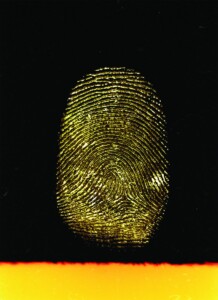
Other works included were “Seven of Diamonds”, an installation by Ulla von Brandenburg, which freely alludes to the checked patterns of freemasonry symbolism and tarot as it is anchored in alchemy, the cabbala, and numerology while Brice Dellsperger’s remake of Eyes Wide Shut, “Body Double 22” pushes the cliché image of secret societies to its very extreme. This non-linear selected edit of the film is like a never ending mirror game, where images are de-constructed and deformed, triggering in the spectator’s mind fractured memories of the real film (as a cult) and Dellperger’s re-enacted version of it, creating a playground which continuously reminds the viewer of their instability.
Political conspiracies were critically echoed in numerous projects. In his “Souvenir d’Italie (Fondamenti della Seconda Repubblica)”, Luca Vitone exposes all 959 members of the secret organization Propaganda Due, which planned a coup in Italy in the 1970s; the later Prime Minister of Italy, Silvio Berlusconi, was one of the lodge’s members. Eva Grubinger’s monumental black courtroom installation “The Trial of Henry Kissinger” investigates the power-political entanglements of the former Secretary of State and Nobel Prize winner – a figure somehow ‘above the law’ or ‘beyond good and evil’, while Sean Snyder’s “The Site”, an analysis of photos and texts on Saddam Hussein’s arrest in 2003, unmasks the charging of per se meaningless visual evidence with meaning and thus reveals the mechanisms and tendencies of media reports in a manner of astounding relevance to the current situation.
What about secrets in the age of Wikileaks? Within our current universe of digital communications, the mass disclosure of information through “leaks” and “the whistle-blower” seems to be the rule not the exception. But doesn’t absolute transparency and information explosion offer the best possibility for camouflage? Secrets are so obvious today that we are no longer aware of them. These and many other issues were raised in the exhibition whose intention was not to capture invisible things or uncover conspiracies but explicitly tried to highlight the paradox that secrets are only secrets if they are communicated, yet disappear as soon as they are out.
